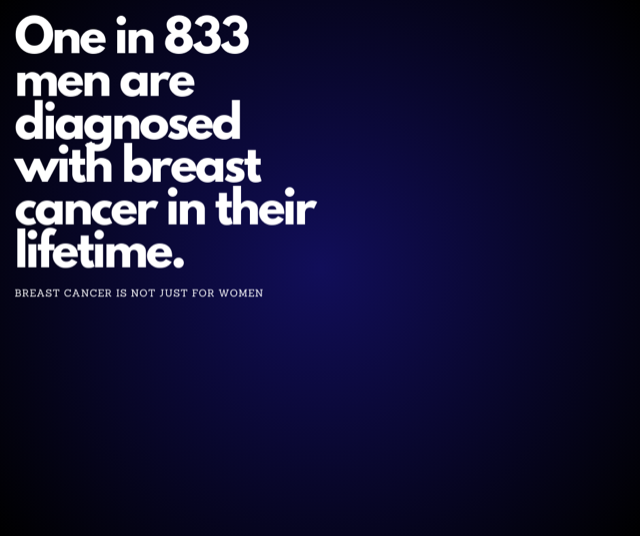CULLMAN, Ala. – Each year around 300,000 individuals will hear the words that nobody ever dreams of hearing, “I’m so sorry, but you have breast cancer.” Eight words to shatter a reality and set the path for an uphill battle. Out of 300,000 patients diagnosed with breast cancer every year, 2,800 are men. One out of every 100 breast cancer diagnoses every year are for men, and one in 833 men will face a breast cancer diagnosis in their lifetime.
Symptoms and treatments for breast cancer in men and women are largely the same; however, male breast cancer patients have a 19% higher mortality rate than their female counterparts. Why is there a large disparity in mortality and survival rates between men and women if symptoms and course of treatment are often similar? There simply aren’t enough men who seek treatment early, due to not recognizing symptoms. Even when a man sees his primary care physician with unusual chest symptoms, neither the doctor nor the patient expects breast cancer; it often goes undiagnosed until it is more advanced.
Scientists have also found that male breast cancers are biologically and molecularly different compared to women’s breast cancers, highlighting the need for more research to improve prognoses and survival rates in men. Risk factors also vary widely between men and women; this includes previous radiation treatments or hormone therapy, a family history of breast cancer (male or female) or liver disease. Males with Klinefelter syndrome are also at a higher risk of developing cancer.
Dr. Michael Garcia of Clearview Cancer Institute stressed the need for genetic testing in men with a family history of breast cancer, stating, “Men with family history of breast cancer should have genetic testing performed. Many breast cancer cases in men are men who have the BRCA-2 gene.”
While women are well versed and studied in the art of manual breast checks, as they are constantly reminded to periodically feel for lumps and abnormal areas, this is not standard information given to men. To check a breast manually, simply take the tips of the fingers, and feel around the soft tissue of the breasts, ensuring to go as far as the underarm, applying light pressure with the fingertips in a walking motion.
Garcia said, “Lumps are usually found on the breast by the nipple, but can be anywhere in the breast tissue.”
If any abnormal lumps, discharge, raised areas or abnormally textured patches of skin are found, contact a doctor immediately.
Symptoms of male breast cancer can include:
- A painless lump or thickening in the breast tissue
- Changes to the skin covering the breast, such as dimpling, puckering, redness or scaling
- Changes to the nipple, such as redness or scaling, or a nipple that begins to turn inward
- Discharge from the nipple
Breast cancer can also disproportionately affect Black men. Reports from the Centers for Disease Control and Prevention (CDC) state that 2.7 of every 100,000 Black men are diagnosed with breast cancer each year, and they typically have a lower recovery and survival rate than their white peers. Males of color are 76% more likely to succumb to the disease, even with the same or similar treatments as white males.
Standard treatments can include hormone therapy, chemotherapy, radiation and surgical options such as mastectomies. Clinical trials are also an option if cancer cells are not responding to conventional treatment options. Many of the available treatments that are currently used and recommended are the product of successful clinical trials. An oncologist will evaluate a patient’s health history and recommend a course of action and treatment to target the cancer cells.
Survival rates for breast cancer in males vary greatly, depending on age, health history, stage of disease at diagnosis and efficacy of treatment options used. If cancer is only located in the breast tissue, the five-year survival rate is 95%; if cancer has spread to the lymph nodes, the survival rate is 83%; if cancer has spread to a distant area in the body, survival rates are 19%. Keep in mind that 47% of breast cancer diagnosed in males is diagnosed at an early localized stage. Even with a more advanced stage of cancer at diagnosis, new treatments are always becoming available to help people fighting breast cancer maintain and keep a satisfactory quality of life for a significant length of time. Early detection and intervention are key, and can drastically improve outcomes and survival rates.
Copyright Humble Roots LLC, 2023. All Rights Reserved.
































